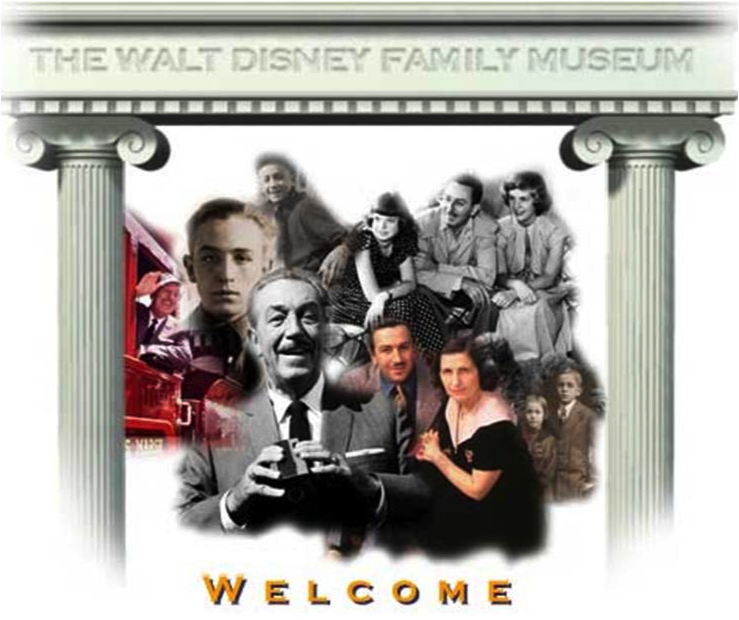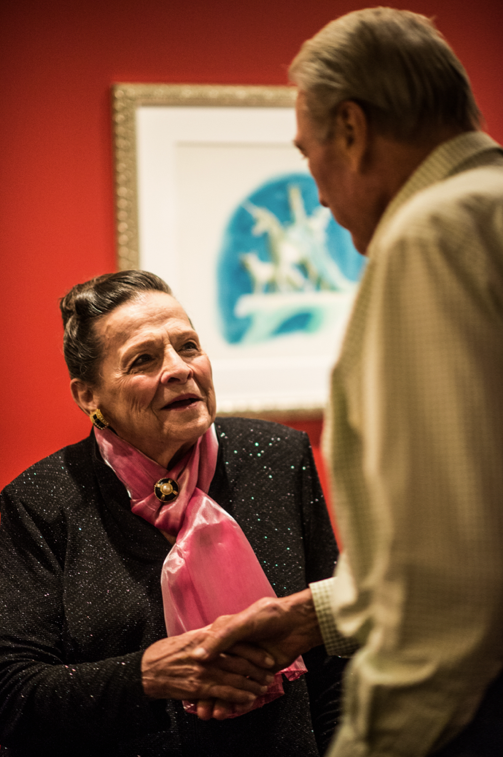Before opening on October 1, 2009, The Walt Disney Family Museum existed virtually as a website, beginning in 1999. On a regular basis, Storyboard will revisit some of the terrific content from this “museum on the web.”
In the first of our new “Walt’s Friends & Family” series, we present an exclusive interview with Imagineer and Disney Legend Alice Davis.
 Alice was married to one of Walt's most talented and well-known artists, Marc Davis—whose art and work is currently on view in an exhibition, Leading Ladies and Femmes Fatales: The Art of Marc Davis, here at The Walt Disney Family Museum. But the fact is that Alice was, in her own right, a very important person in the Disney organization. She was deeply involved in Walt's work in the 1964 World's Fair, notably “it’s a small world.” Additionally, she and Marc were both very close to Walt's plans for a new kind of art school, which became CalArts. Here a few of her memories of her time with Walt.
Alice was married to one of Walt's most talented and well-known artists, Marc Davis—whose art and work is currently on view in an exhibition, Leading Ladies and Femmes Fatales: The Art of Marc Davis, here at The Walt Disney Family Museum. But the fact is that Alice was, in her own right, a very important person in the Disney organization. She was deeply involved in Walt's work in the 1964 World's Fair, notably “it’s a small world.” Additionally, she and Marc were both very close to Walt's plans for a new kind of art school, which became CalArts. Here a few of her memories of her time with Walt.
Q: What do you think Walt had in mind when he got involved in the World's Fair?
Alice: I think in the back of his mind doing the New York World's Fair was the idea that it would also give him something to improve on Disneyland, which he wanted to be something different from any other amusement park. He wanted it to be something where the whole family could enjoy it. He had great ideas like the pirate ride and things of that type, where he would have the audio and the animatronic figures. I think the World's Fair was an experiment.

The challenge of creating “it’s a small world” in under a year was a little staggering, wasn't it?
It was a difficult time. He always asked you to do something that was far beyond what you thought you were capable of doing, and he always made you surprise yourself by reaching that goal. He had a marvelous way of making you want to please him and when you pleased him, you didn't touch ground for a day or two. It made you feel awfully good. So, he made you stretch yourself, and we had one year to get the show together.
We had lots of problems with the dolls, with the skin tearing. Like with the Can-Can girls. We had to put long pantaloons on them, below the knee, because the skin would keep tearing with the constant kicking. And I remember, just before the show opened, Walt and [a couple of dignitaries] were coming around in the boat, and I was up on the bridge leaving, and Walt called to me and he said, 'Alice, how come you put long pantaloons on the Can-Can girls?' And I knew he didn't want a long explanation. I said, 'Well Walt, you told me you wanted a family show.' And with this, I ran, and they laughed and everything was fine.
When Pepsi first came to others in the Studio about the World's Fair, they didn't think there was enough time, did they?
Yes. And he said, "We can do it." He always insisted that we could do it, and we did it.
And we had a very small crew doing it, and we all worked very diligently at it. I'll tell you a very funny story about him and the way he was. I was dressing the dolls for Mexico and Walt came in. I was on center stage and Walt came in and he said, "Alice, get down here, I want to show you something." And I thought, "Whoops! What have I done now?'"' And I came down and he took me by the arm and he led me out of the sound stage. And he said, "Alice, I've got to show you something that I'm going to do."
And he led me around the corner, where they parked the station wagons for driving down to Disneyland, delivering things. And he said, 'Come over here.' And he was like a little kid. He had the [Audio-Animatronics] grandmother from the General Electric show, sitting in the backseat of this car, with her little shawl on and so on. And he had a wheelchair in the back part of the station wagon. And he said, 'I'm sending her to New York on American Airlines. First class.' And he said, 'I've got a young girl going with her that's going to take care of her. And we're going to take her on the plane, first in the wheelchair and set her on the seat. And this girl will be taking care of her.' And he was very excited and wanted to know what did I think of it. And I said, 'I think it's a wonderful idea.' And she went and everybody thought she was a real person. And they were all very surprised when they wheeled her off the plane, and she was a big success in New York.
 Any other funny stories come to mind?
Any other funny stories come to mind?
You know, there's a funny little story of the opening of Disney World and one of the workmen heard these two little old ladies that were standing looking at all the beautiful flowers and such and one said, 'Oh, didn't Mr. Disney pick a wonderful place to build his Park?' They didn't know it was a swamp to start with.
We've heard you tell a story about how Walt worked with Mrs. Nelbert Chouinard of the Chouinard Art Center. Would you repeat it?
He knew he wanted to have well-trained artists, and he knew his artists weren't trained enough for what he wanted to do. He started going to the different art schools in Los Angeles, asking if they would train his artists and when he had the money he would pay them. And he went to one and they laughed at him and he went to the Art Center and they laughed at him and he finally ended up at the Chouinard Art Institute and asked Mrs. Chouinard and Mrs. Chouinard looked at him and she said, 'Mr. Disney, I admire what you're doing. You send your people, and we'll take care of the bill later.' And so she carried him for two years before he was able to pay her, and he never forgot this.'
How was Walt able to show his gratitude when the Chouinard Art Institute fell on hard times many years later?
She called him and he had her come out for lunch right away, and he immediately sent his top accountants down to find out that she had been robbed blind by people who were working for her, and that was how CalArts started. He paid off all her debts and she became ill and he took care of her in her illness. He saved her house for her.
And can you tell us a little about Walt's initial thoughts for CalArts?
He had an art school that would have been the art school of all art schools. He wanted to have closed television in the school so the students that were studying fine arts or illustration could watch the students dancing and could draw the students dancing. He was going to have an art gallery where the students could put up their work for sale and help pay for their tuition or their rents, whatever. He had the costume design students, the garment students and such, all working together learning their trade. He had great plans of having people like Picasso come and spend the summer at the school and give classes for the students. And he, himself, wanted to come over and teach story.
